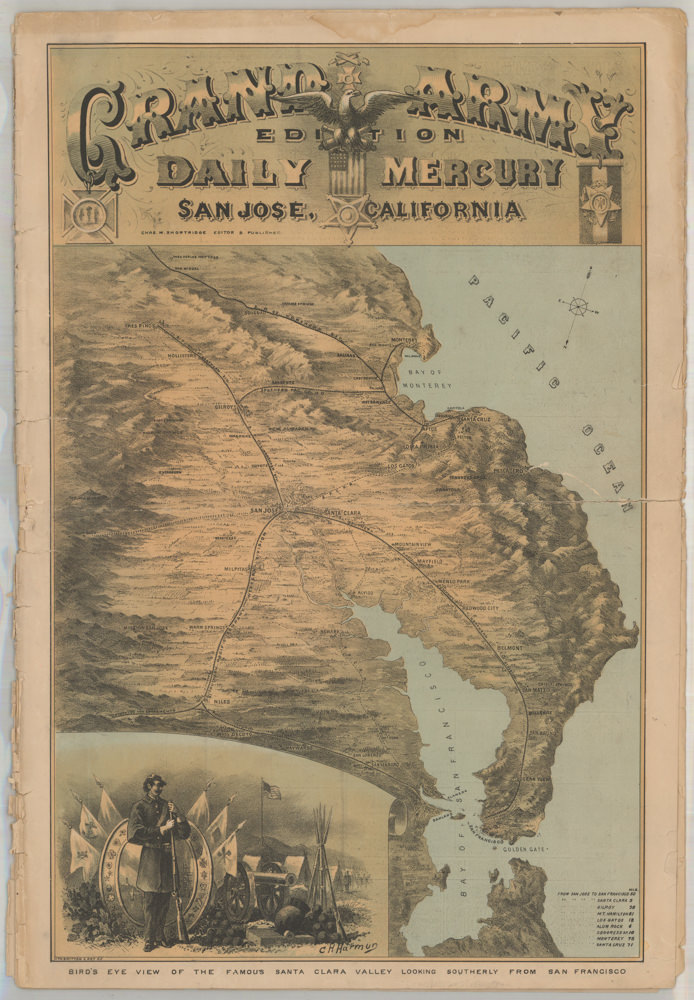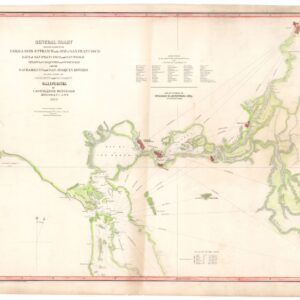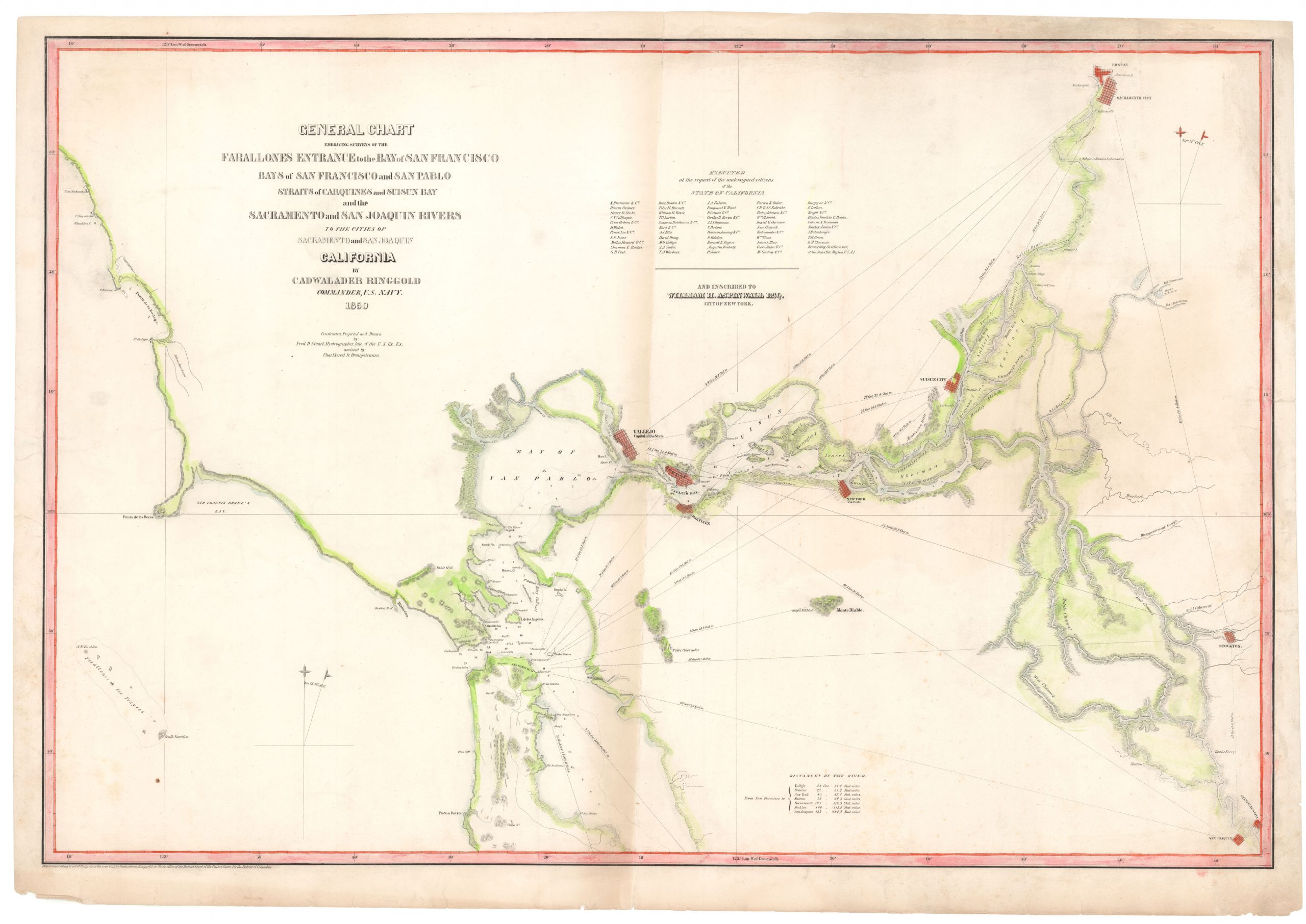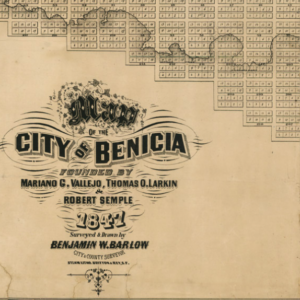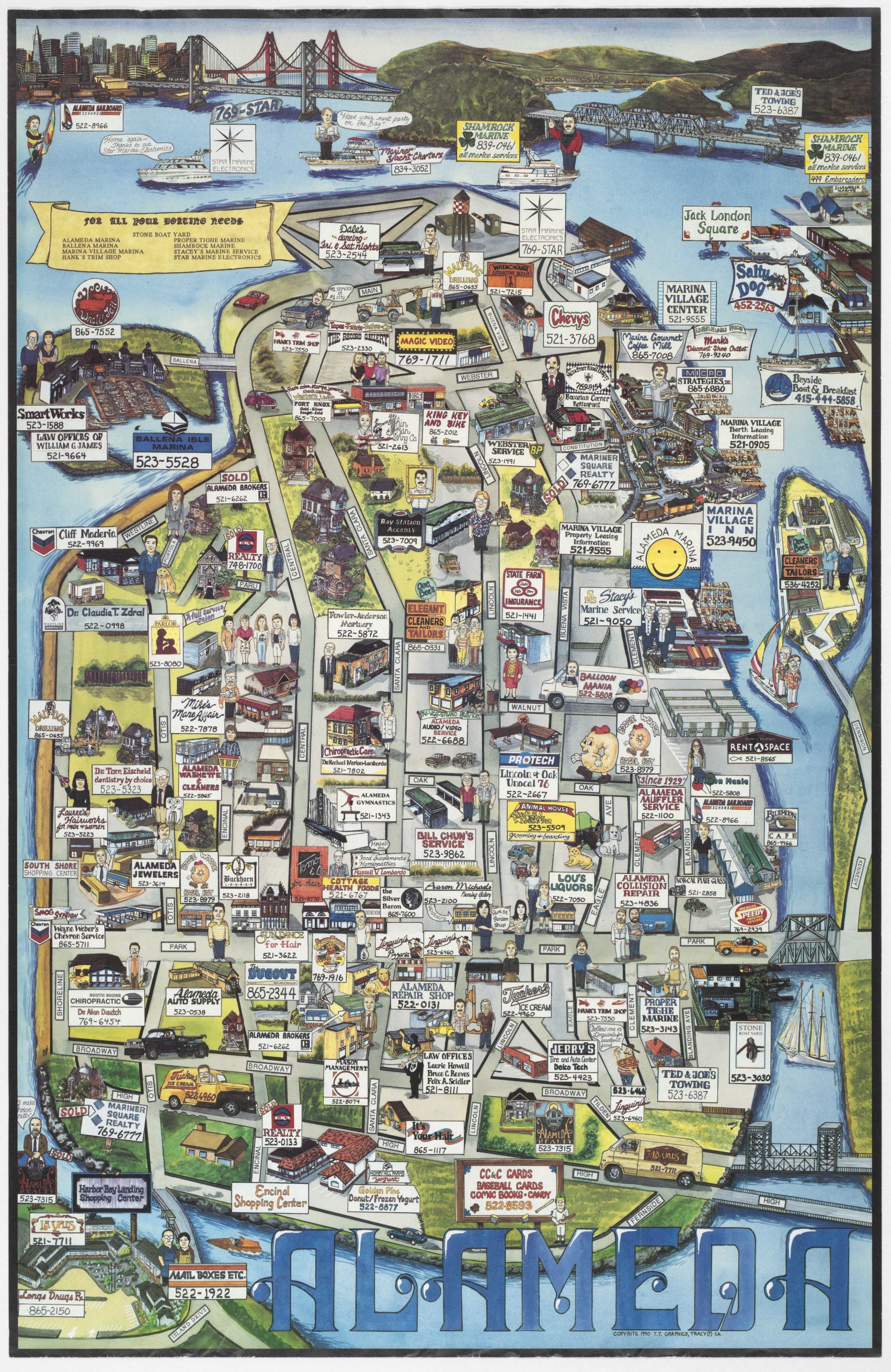Land grants, failed endeavors, and a fabulously wealthy stage actor: the story of North Berkeley’s Peralta Park.
Map of Peralta Park, Berkeley, Alameda County, Cal. Subdivided October 1878. M.C. King, C.E. Scale 80 Feet to One Inch. Property of M.B. Curtis.
$2,450
1 in stock
Description
A striking real-estate map from the Bay Area’s boom years. Not only does this beautiful little chart embody much of the area’s complex history, but it also encapsulates one of many progressive visions that drove the development of San Francisco and the Bay Area into a global metropolis.

This beautifully crafted real-estate map was created with the express intention of developing housing and infrastructure in the North Berkeley neighborhood around Peralta Park (Alameda County). The map is a color-lithograph, measuring 34.5 inches wide by 22 inches tall, and designed as a folding map for ease of use. The map is extremely detailed, showing elements such as topographical contours, roads, Cordornices Creek, and perhaps most importantly, plots for sale and their precise acreage. Due to the inclusion of several streets (Curtis/Monterey Avenue, Posen Avenue, and Albina Avenue) and at least one major road (Hopkins Street), the area is easily identifiable in contemporary terms as the neighborhood comprising and surrounding Saint Mary’s College in Albany. The size of even the smaller plots by today’s standards tells a story of just how dramatically the Bay Area was developed over the last 150 years. The attempt to visualize this desirable neighborhood was done with such a keen attention to detail that even individual groves of trees have been included in the map.
The area in question was part of the 44,800-acre Rancho San Antonio, which was granted to Luis Maria Peralta for his services to the Spanish Crown in the late 18th and early 19th century. Peralta was initially a regular soldier, serving as a corporal of the guard at the Missions of Santa Clara, San José, and Santa Cruz. His family nevertheless had been among the first extended families to settle in the area, arriving with Juan Bautista de Anza on his 1776 expedition to Alta California. Peralta’s claim to fame, other than receiving one of the largest land-grants in history, was chasing down a posse of Native Americans that had supposedly attacked a local priest. Leading a garrison up the San Joaquin Valley and surprising the presumed attackers in their village, Peralta won a decisive victory, which saw his status significantly elevated. Two years later, in 1807, he was appointed comisionado of the pueblo of San José, in effect making him the highest military and civilian official in the region. Undoubtedly, it was through this station that in 1820 Peralta was rewarded with the Rancho San Antonio land-grant, in recognition of services rendered to the crown.
In 1842, Peralta divided the lands among his four sons, and Domingo Peralta received the portion that today comprises Berkeley and Albany from Alcatraz Avenue to El Cerrito Creek. The portion delineated in this map eventually came to be owned by Maurice B. Curtis, as is also indicated on the map. Curtis was a successful Jewish-American immigrant from Hungary, who had made his fortune as a stage actor, producer, and real estate developer. He used much of his wealth to purchase extensive land holdings in the Bay Area, which he would then subdivide and gradually sell off for development.
The means by which Curtis came to own this land is quite revealing of the era in which it occurred. In the early 1870s, shortly after Domingo Peralta’s death, sixty acres of his lands were bought by financier William Ralston, who envisioned the development of Peralta Park, but drowned swimming in San Francisco Bay before he could begin his project. The executor of Ralston’s estate fraudulently used the land as collateral for an $8,000 loan from the California Insurance Company. When he defaulted on the loan, the company, founded by Caspar Hopkins, one of the early Fruitvale settlers, seized the land, and set about looking for a buyer. In 1878, it was Maurice Strelinger, aka Maurice B. Curtis (1849-1920), who came up with the dazzling $32,000 that was needed. In the early 1870s, when he moved to Berkeley with his wife, Curtis spent a large part of his fortune building Berkeley’s new train station and fire house, paving roads, and installing street lights.

Curtis was best known for starring as Samuel Plastrick in the film version of George Jessop’s comedic melodrama Sam’L of Posen, and he used this fame to recruit investors from his business and theatre connections. In 1878, he began the subdivision of his Peralta Park holdings, and it is in lieu of this project that our evocative map was created. Several homes were erected during this the period, including Curtis’s own house on 1505 Hopkins Street. As seen on the plan, different sized plot were interconnected by streets, which Curtis named after himself, after his star role (Posen Avenue), and after his wife, Albina Del Mar (stage name). While Curtis Avenue today is called Monterey Avenue, the other two street names — Posen Ave. and Albina Ave. — have lasted to this day.
Originally, the entire estate was planned around a central luxurious hotel. Curtis set up the Peralta Park Hotel Company and began construction of the hotel in 1888. In addition to its fantastic turreted exterior, the hotel boasted sixty bedrooms and twenty bathrooms — an unheard-of luxury at the time. The hotel never opened, however, as the enormous building costs soon became too heavy a financial burden for Curtis and his investors to carry. The building was consequently put up for lease and first became a girls’ school, after which it was purchased by St. Joseph’s and turned into St. Mary’s College High School. A fire devastated the upper floor of the magnificent building in 1946, but the lower floors remained in use as dormitories until the building was deemed a seismic hazard and demolished in 1959.
Cartographer(s):
The Schmidt Label & Lithography Company was an American publishing house based in San Francisco and which specialized in the printing of labels (although separate prints also were issued). It was founded in 1873 by a German immigrant, Max Schmidt. Schmidt was one of the first West Coast printers to use the lithographic technique, giving him a distinct advantage over his competitors and cementing his success. By the 1890s, he ran a factory in the city as well as branches in Portland and Seattle. Despite facing severe set backs, including several fires and the complete destruction of his plant in the 1906 earthquake, Schmidt was an extremely resilient and innovative businessman. Within a few years of the 1906 devastation, the Schmidt Company had become one of the largest printing houses on the West Coast.
Condition Description
Excellent. Archivally backed.
References

